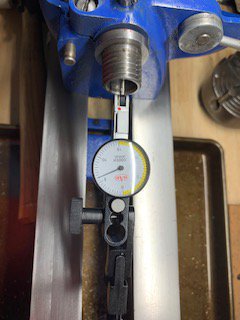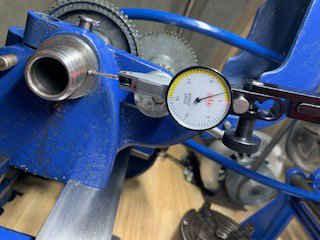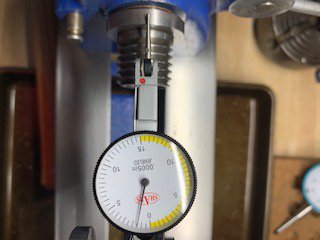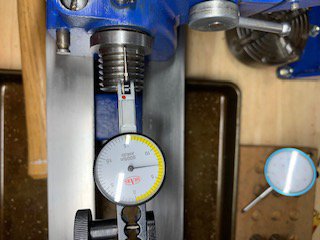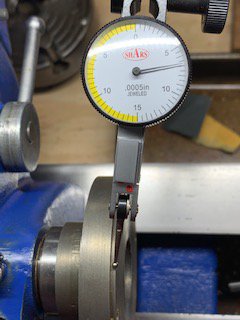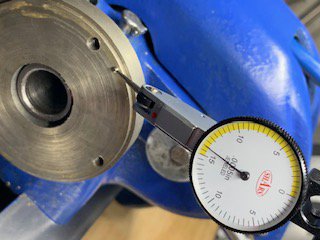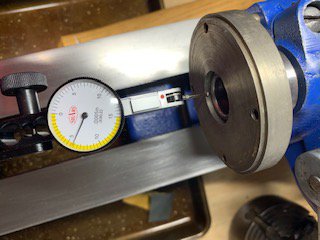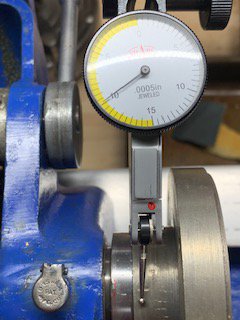- Joined
- Sep 5, 2020
- Messages
- 43
I just completed my 7301 rebuild. leveled it and am generally happy with it. I have a bunch to learn so step one was to just get something in it and see if it actually cut. However, the 4 jaw chuck has a ton of run out. I have checked runout at several places to try to diagnose and am concluding its the chuck.
1. I could see wobble when I turned it by hand.
2. I put a dial indicator on it at 12 oclock just behind the adjustment hole, zero'd it on the first jaw and rotated it in the normal operating direction of the lathe. I got +0.010 to -0.005 (0.015 tir).
3. I re-did 2, but indicated off the outer diameter of the backplate. Same result.
4. I redid 2 but indicated off the hub of the chuck I get 0.004 total.
5. Indicated off the hub on the spindle and get 0.001, slightly less. Though its all in one quadrant (75% of rotation is ~0 and 25% runs up to 001 and back to zero.
I had a notion to teardown the chuck clean it, and then put the backplate on the lathe, remeasure it and turn it true to the lathe and face it. then do the same to the chuck. But a bunch of googling never found doing such a thing and that's a clue that I might be thinking wrong.
1. I could see wobble when I turned it by hand.
2. I put a dial indicator on it at 12 oclock just behind the adjustment hole, zero'd it on the first jaw and rotated it in the normal operating direction of the lathe. I got +0.010 to -0.005 (0.015 tir).
3. I re-did 2, but indicated off the outer diameter of the backplate. Same result.
4. I redid 2 but indicated off the hub of the chuck I get 0.004 total.
5. Indicated off the hub on the spindle and get 0.001, slightly less. Though its all in one quadrant (75% of rotation is ~0 and 25% runs up to 001 and back to zero.
I had a notion to teardown the chuck clean it, and then put the backplate on the lathe, remeasure it and turn it true to the lathe and face it. then do the same to the chuck. But a bunch of googling never found doing such a thing and that's a clue that I might be thinking wrong.


